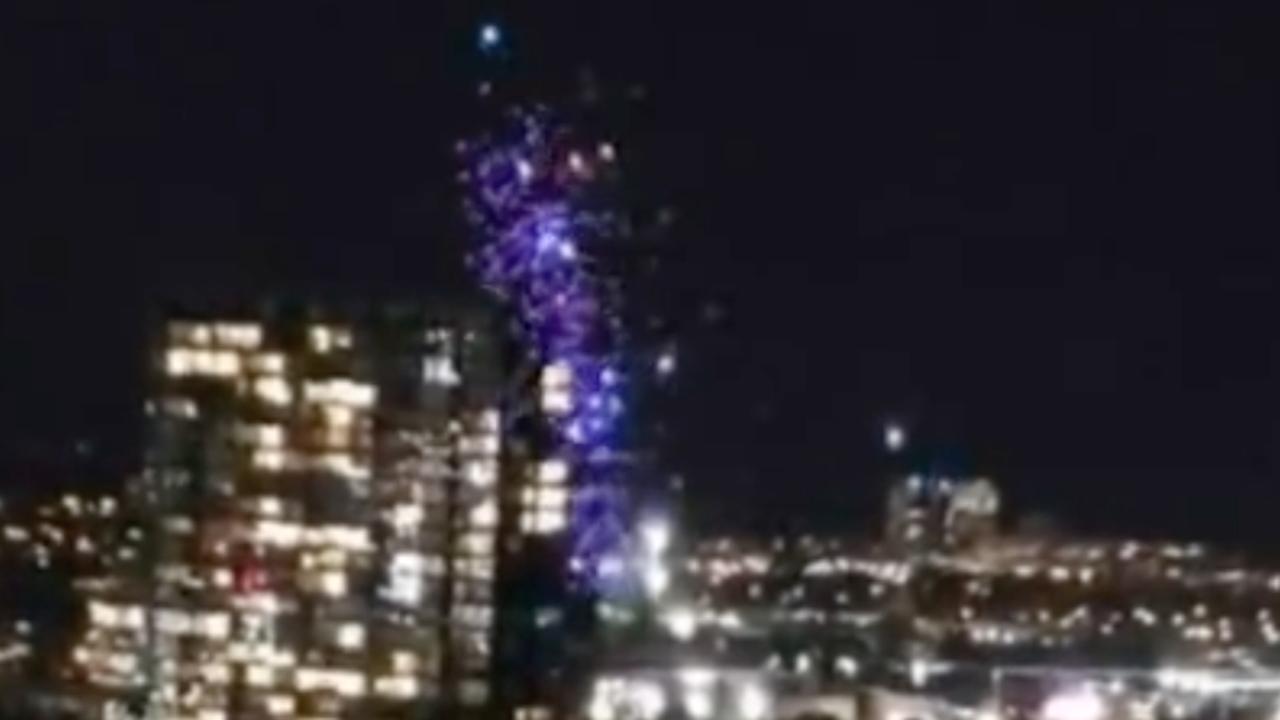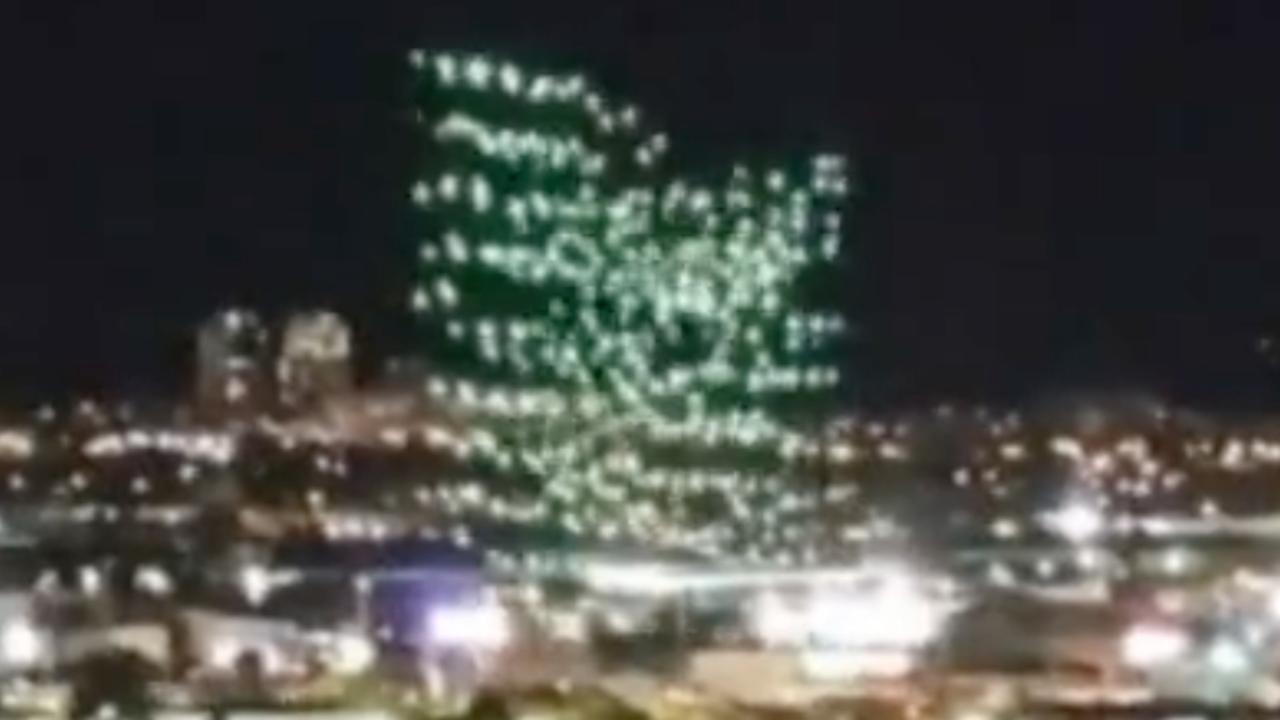Orlando drone show malfunction: A spectacular drone light show over Orlando experienced an unexpected disruption, leaving spectators and organizers alike questioning the cause and consequences. This incident provides a compelling case study in the complexities of large-scale drone operations, highlighting both the breathtaking potential and the inherent risks involved in such technologically advanced displays. We will delve into the technical aspects of the malfunction, examine the impact on the audience, and explore the post-incident response, offering insights into how future incidents might be prevented.
The detailed account will cover the specific events, the types of drones involved, and a timeline of the malfunction. We will explore potential causes, ranging from software glitches to external factors, and compare this incident to similar occurrences. The analysis will also consider the spectator experience, the legal ramifications, and the steps taken to mitigate future risks. Ultimately, this investigation aims to provide a comprehensive understanding of this event and contribute to the ongoing improvement of drone show safety and reliability.
The Orlando drone show malfunction highlights the inherent risks in large-scale drone displays. Such incidents underscore the need for robust safety protocols, a point further emphasized by considering the recent events surrounding the kazan drone attack , which showcased the potential for drones to be used in malicious ways. Therefore, improving the reliability and security of drone technology is crucial to prevent future malfunctions and misuse, ultimately ensuring the safety of drone shows and the public alike.
The Orlando Drone Show Malfunction

The recent Orlando drone show experienced a significant malfunction, disrupting the performance and raising concerns about safety protocols and technological reliability in large-scale drone displays. This incident provides a valuable case study for examining the technical challenges and operational considerations involved in such events.
The Orlando Drone Show Incident: A Detailed Account

During the peak of the Orlando drone show, a portion of the drone swarm experienced a simultaneous malfunction. The exact number of affected drones varied according to different reports, but a significant number deviated from their programmed flight paths. This resulted in erratic movements and a temporary disruption of the planned light show. The drones involved were reportedly commercially available models, with specifications likely including GPS, onboard processors, and communication systems enabling synchronized flight.
Precise technical specifications, however, remain unavailable due to the ongoing investigation.
The malfunction began subtly, with a few drones displaying minor deviations from the choreography. Within seconds, however, this escalated into a larger-scale issue, affecting a considerable portion of the display. The show organizers swiftly initiated emergency protocols, including a ground stop command, which ultimately brought the affected drones to a safe landing. The event resumed after a delay, though the affected portion of the show was omitted.
| Time | Event | Drone Affected | Impact on Show |
|---|---|---|---|
| 8:15 PM | First signs of deviation observed in a small group of drones. | Approximately 10 drones | Minor visual disruption, almost imperceptible to the audience. |
| 8:16 PM | Significant number of drones deviate from programmed flight path. | Approximately 50 drones | Major visual disruption; erratic movements visible to the audience. |
| 8:17 PM | Emergency ground stop command initiated. | All affected drones | Show temporarily halted; audience displays concern. |
| 8:25 PM | All drones safely landed; show resumes after a brief delay. | N/A | Portion of show omitted; overall impact on audience experience. |
Technical Aspects of the Malfunction, Orlando drone show malfunction
Several potential causes for the malfunction are under investigation. These include software glitches in the central control system or individual drone firmware, hardware failures such as GPS or communication system malfunctions, and even external factors like GPS signal interference or unexpected weather conditions. The show’s safety protocols, likely involving redundant systems and fail-safes, appear to have been partially effective, as the emergency ground stop command ultimately prevented a more serious incident.
The recent Orlando drone show malfunction highlights the complexities of large-scale aerial displays. Issues with synchronization and navigation can lead to unexpected outcomes, underscoring the need for robust safety protocols. For a different perspective on remote technological monitoring, check out the live feed from the cobequid pass camera , which offers a fascinating contrast to the orchestrated chaos of a drone show.
Ultimately, both examples demonstrate the potential and the challenges inherent in utilizing drone technology.
However, the rapid escalation of the malfunction highlights the need for improved redundancy and robustness in these systems.
Similar incidents have been reported at drone shows globally, often attributed to communication failures or software bugs in the controlling software. Analysis of these past incidents can inform future safety protocols and technological improvements.
A possible sequence of events could be illustrated in a flowchart. The flowchart would start with the drones receiving flight instructions. Then, a potential failure point could be a software glitch within the control system or a hardware failure in a subset of the drones. This would lead to erratic flight patterns. The next step would be the triggering of safety protocols, followed by the execution of the emergency ground stop command, and finally the safe landing of the drones.
Impact on Spectators and the Event
Audience reaction ranged from initial confusion and concern to eventual relief as the situation was resolved. Many spectators expressed surprise and some apprehension during the malfunction, with accounts describing erratic drone movements and a sense of uncertainty. The incident likely impacted the overall perception of the drone show, potentially affecting future attendance and the reputation of the organizers.
The legal implications could involve investigations into whether adequate safety measures were in place and whether the organizers met their legal obligations to ensure public safety.
Post-Incident Response and Recovery
The organizers responded swiftly, initiating emergency protocols and communicating with the audience throughout the incident. They addressed the situation promptly, ensuring the safe landing of all drones and providing updates to reassure the audience. To prevent similar incidents, improvements to software redundancy, enhanced communication systems, and rigorous pre-show testing are likely to be implemented. Effective communication strategies involved providing clear and timely updates to the audience via announcements and social media, minimizing speculation and maintaining transparency.
The Orlando drone show malfunction sparked considerable discussion regarding safety protocols. This incident highlights the potential risks involved, prompting comparisons to other drone-related mishaps, such as the one detailed in this report on a florida drone accident. Understanding these failures is crucial for improving the safety and reliability of future drone displays in Orlando and beyond.
- Implement more robust redundancy in the drone control system.
- Conduct more rigorous pre-flight checks and simulations.
- Improve GPS signal reception and incorporate alternative positioning systems.
- Develop advanced failure detection and recovery mechanisms.
- Enhance communication protocols between drones and the control system.
- Establish clearer emergency protocols and communication strategies.
Visual Representation of the Malfunction
Visually, the malfunction presented as a sudden disruption in the synchronized movements of the drones. Instead of the cohesive, choreographed patterns of light, segments of the formation began to drift erratically, some drones veering sharply from their designated paths, while others appeared to momentarily lose synchronization, creating a visually jarring effect. The affected drones displayed unpredictable movements, flashing erratically as they deviated from the programmed light sequences.
The overall visual impact was a stark contrast to the initially seamless and captivating performance. Before the malfunction, the drones moved in precise formations, creating vibrant patterns in the night sky. During the malfunction, these formations fragmented into chaotic, unpredictable movements. After the malfunction, a significant portion of the drones remained stationary, awaiting further instructions, before the show resumed with the remaining drones, omitting the affected sequence.
The Orlando drone show malfunction serves as a stark reminder of the delicate balance between technological innovation and potential failure in large-scale drone displays. While the incident undoubtedly caused disappointment and concern, it also presents a valuable opportunity for learning and improvement. By thoroughly analyzing the causes, impact, and response to this malfunction, the industry can take proactive steps to enhance safety protocols and prevent similar occurrences in the future.
The lessons learned here are crucial for ensuring that future drone shows continue to captivate audiences while maintaining the highest standards of safety and reliability.
Helpful Answers
What was the estimated cost of the damages caused by the malfunction?
Precise figures on damages are not publicly available. The cost likely includes repair or replacement of drones, potential refunds to spectators, and reputational damage.
Were there any injuries reported among spectators or personnel?
No injuries were reported as a direct result of the drone malfunction itself.
What specific type of software or hardware failure is suspected?
The exact cause is still under investigation. Potential causes include software glitches, hardware failures, or interference from external factors.
How many drones were involved in the malfunction?
This information will be detailed in the main body of the report, along with a specific number of affected drones.

